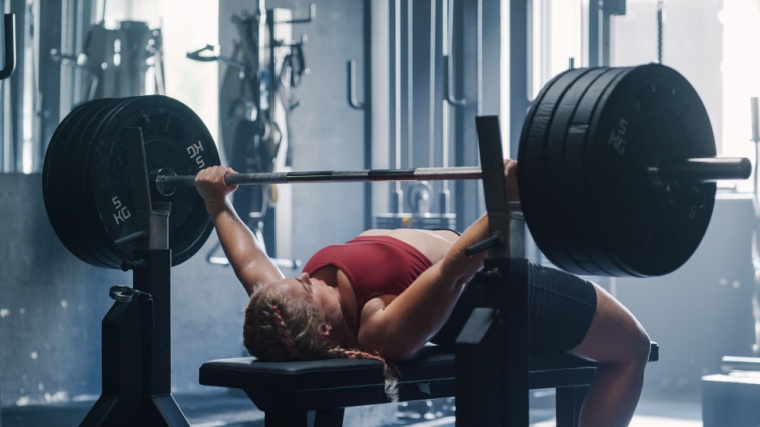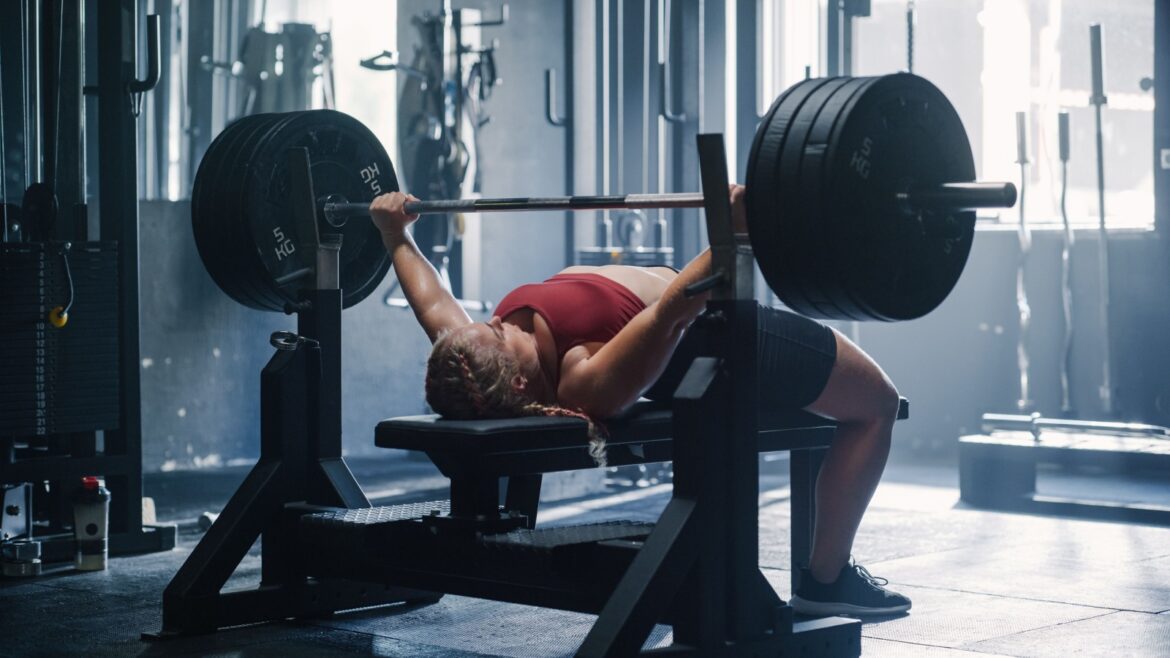Arching your back on the bench press can help deliver more muscle gains to your doorstep.
The best bench pressers in the world arch their backs when they set up for a 1-rep max. It’s a controversial technique that less-informed lifters would decry as “cheating.”
Back arching also happens to be an expert-backed bodybuilding tip on chest day. Whether you’re pursuing muscle gain or strength, the “chest up” cue can help speed things along.
But don’t take our word for it; let’s hear from the pros.


[Related: Best Pre-Workout Supplements for Bodybuilding]
Bench Press Technique for Muscle Gain
“For the vast majority of people, [back arching] will keep more pectoral fibers aligned with the pressing plane of motion,” renowned bodybuilding coach Joe Bennett said on Sep. 16, 2024.
Bennett argued that arching your spine accomplishes several things that all contribute to more muscle gain:
- Improved leverage, allowing you to lift more weight.
- Better “pec mechanics.” Bennett suggested that an arched spine shifts more load onto the chest and away from other muscles.
- More of a stretch applied to the chest, especially in the bottom of a press or flye variation.
[Related: Best Whey Protein Powders for Muscle Growth]
If you’re having trouble achieving this chest-up posture during your chest workouts, Bennett offered the following cue:
“Imagine you have a string attached to the base of your sternum,” he said. The sternum is the hard, bony protrusion at the front of your ribcage. “Imagine that string is pulling you up toward the ceiling by your chest.”
Why It Works
To understand how arching your back creates more muscle gain, you’ve gotta have a handle on your anatomy.
- Your pectoralis major muscle (a.k.a. your chest) attaches from your ribcage to your humerus, or the upper arm bone.
The pecs’ main anatomical function is humeral adduction, drawing your arm horizontally toward your midline. This happens dramatically during a dumbbell flye, and to a lesser degree on any chest press variation.
Performing the opposite motion stretches the pecs. If you’ve ever done the doorway stretch for your chest, you know how relieving it feels to grasp the frame of the door and take a step forward.
Arching your back amplifies this effect by further stretching the pectoralis muscle. It puts your upper arm further behind your torso than it would otherwise be.
- Studies tell us that this stretched position, coupled with high mechanical tension from lifting weights, is the ticket to maximizing muscle gain. (1)
[Related: Best Supplements for Bodybuilding]
Back Arching for Bench Press Strength
An arched spine also augments bench press performance by reducing the exercise’s range of motion and improving leverage.
If you’ve ever used a decline bench press station, you probably noticed your typical bench press weights feeling a bit lighter than usual. That’s leverage in action, and arching your back accomplishes the same thing (if to a lesser degree).
- An arched back also helps protect your shoulders by reducing the amount of internal rotation the joints experience under load.
- Internal rotation isn’t dangerous per se, but some strength athletes report shoulder discomfort on the bench from applying too much stress to the joint in a relatively compromised position.
Back arching can ante up your muscle gain while helping you lift heavier weights in the process. It’s a win-win, so keep your chest up next time you’re in the gym.
[Related: Best Post-Workout Supplements for Recovery]
More Bodybuilding Content
References
- Pedrosa, G. F., Lima, F. V., Schoenfeld, B. J., Lacerda, L. T., Simões, M. G., Pereira, M. R., Diniz, R. C. R., & Chagas, M. H. (2022). Partial range of motion training elicits favorable improvements in muscular adaptations when carried out at long muscle lengths. European journal of sport science, 22(8), 1250–1260.
Featured Image: Kitreel / Shutterstock
